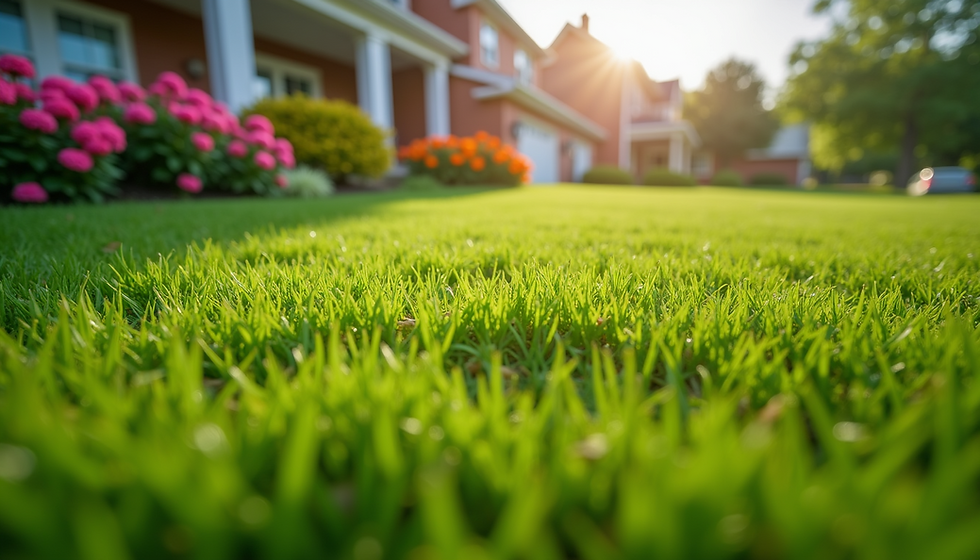Essential Tips for Prepping Your Landscaping for Fall Weather
- Timothy Jacobs
- Sep 20
- 3 min read
As summer gives way to cooler temperatures, it’s crucial to get your landscaping ready for fall. This transition is vital to keeping your outdoor spaces healthy and vibrant during the winter months. Whether you have years of gardening experience or are just starting out, these practical tips will help you prepare your landscaping for the changing weather, ensuring it thrives until spring.
Assess Your Landscape
Before getting started, take a stroll through your garden and outdoor areas to evaluate what needs attention. Look for signs of disease or pests on your plants, as well as damage from the summer sun.
For example, check for yellowing leaves or wilting that might indicate stress or disease. By pinpointing areas that require help, you can prioritize your tasks. Make a checklist of what needs to be done, from pruning stunted growth to replanting, ensuring nothing gets overlooked.
Clean Up Debris
Cleaning up is one of the first steps in fall preparation. Gather fallen leaves, branches, and any dead plants or weeds. If left unattended, this organic matter can turn into a breeding ground for pests and diseases.
For instance, the National Gardening Association reports that 30% of lawn and garden issues arise from improper cleanup practices. Raking up leaves not only tidies your space but also fosters a healthier environment for your plants. Make sure to dispose of or compost any debris to keep your garden vibrant.

Prune and Trim
As the growing season wraps up, it's the perfect time to prune. This is particularly important for perennials, shrubs, and trees. Remove dead or diseased branches to help encourage new growth in the spring.
For flowering plants, deadheading spent blooms redirects energy to the roots. Pruning at this time can lead to a robust return; studies show that well-pruned plants can boost flowering by up to 50% the following season.
Mulch for Insulation
Adding a layer of mulch is an excellent way to insulate your plants during colder months. Mulch helps regulate soil temperature and retain moisture.
Opt for organic choices like wood chips or straw; these break down over time to enrich the soil. Ideally, aim for a mulch thickness of 2-4 inches around your plants. Avoid piling mulch against plant stems to prevent rot.
Plant Fall Flowers
Fall is an ideal time to plant flowers that thrive in cooler temperatures. Consider adding blooms like chrysanthemums, which can survive temperatures as low as 28 degrees Fahrenheit, pansies, or ornamental kale for vibrant color.
These plants not only enhance your landscape but also support local pollinators. Be sure to choose varieties hardy for your climate zone to ensure they make it through the winter and provide blooms next spring.
Prepare Your Lawn
Your lawn needs care as fall approaches. Begin by mowing the grass slightly shorter, which helps prevent disease and encourages strong growth.
Aerating the lawn can be beneficial as well; it allows air, water, and nutrients to penetrate the soil more effectively. Following up with a fall fertilizer can boost growth by providing necessary nutrients. In fact, a study from the University of Maryland found that properly fertilizing in fall can increase lawn health by up to 50% in spring.
Protect Sensitive Plants
If you have sensitive plants, take extra precautions to shield them from cold snaps. Special covers made of burlap or frost cloth can help protect them during particularly cold nights.
For potted plants, either bring them indoors or place them in a sheltered area. Transplanting hardier varieties that can withstand cold can also help ensure a vibrant garden in the spring.
Plan for Winter Interest
While prepping for fall, think about maintaining visual appeal in your garden over winter. Consider incorporating evergreen plants, ornamental grasses, and winter-blooming flowers. These plants keep your garden lively even when most other flora is dormant.
Adding decorative elements like bird feeders or winter planters can attract wildlife and enhance the beauty of your outdoor space. Creating an inviting environment can even increase wildlife visits by more than 30%, according to the National Wildlife Federation.
Store Garden Tools
As gardening season comes to a close, it’s time to clean and properly store your tools. Clear away dirt and remnants, and sharpen any blades that require attention.
Store your tools in a dry, sheltered space to prevent rust. Proper maintenance not only extends the life of your equipment but ensures you have everything ready when spring returns.
Wrap-Up
Getting your landscaping ready for fall is crucial for a healthy outdoor space. By assessing your landscape, cleaning up debris, pruning, and planting fall flowers, you're setting your garden up for success come spring.
Using these tips, enjoy the beauty of the fall season while ensuring your landscaping remains in excellent shape for the upcoming winter months. Embrace this transition with care and dedication, knowing your efforts will pay off beautifully in the long run.










Comments